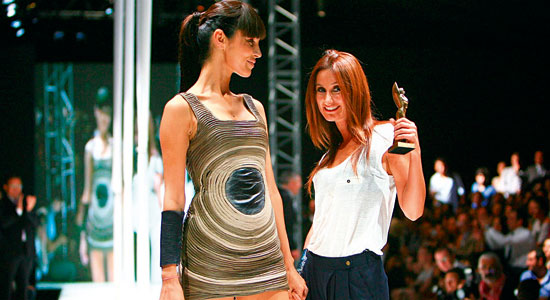

Dating back as far as the Roman Empire, Istanbul is undoubtedly one of the oldest cities in the world. For centuries, the Turkish capital’s natural beauty, spectacular backdrop and diverse mix of culture have all inspired an awe and fascination that have drawn travellers from across the globe. Much has been written about its rich and truly unique history and the lasting impressions left on countless visitors. French writer, politician and poet Alphonse de Lamartine declared that “If one had but a single glance to give the world, one should gaze on Istanbul” whilst Napoleon Bonaparte famously concluded that, “If the earth was a single state, Istanbul would be its capital”.
Spanning both Europe and Asia, Istanbul has always been a crossroads of culture and religion. Today itís a diverse and modern metropolis with a population of close to 13 million.
Despite overcrowding and gridlock traffic, the city has retained much of its historic charm and still lures hordes of tourists annually. Together with PÈcs in Hungary and Essen in Germany, Istanbul is proud to have been named one of three European Capitals of Culture for 2010. With over 600 projects on the cultural agenda, including Istanbul Fashion Week as one of the key highlights, itís added yet another dimension to what the city already has to offer its numerous visitors.
Historically Turkey’s textile industry has always been one of the countryís biggest exports and economically of key importance. But to date, fashion design and international brand recognition for Turkish labels has lagged far behind the base product. Providing a platform from which to launch local brands and increase their export potential, the key objective of Istanbul Fashion Week (IFW) is to change all that. Itís an event, that according to Zafer Caglayan, State Minister for Foreign Commerce, “will enable Turkey to reach a deserved place in the international arena and which will carry the Turkish fashion industry to another level.”
Kicking off the four day event, the Koza Young Fashion Designers Contest (organised jointly by Elle T¸rkiye and Istanbul Fashion Academy) saw 25 finalists exhibiting both directional ready-to-wear clothing and avant garde leather pieces to an audience buzzing with anticipation. Investing in the future of fashion design, the competition showcases the work of aspiring designers and aims to raise international interest. It was certainly a spectacle and celebration of emerging Turkish talent, but the fashion was somewhat eclectic ñ unrealistic and unwearable in many cases and still too immature to be visionary.
Internationally recognised Turkish labels may not be numerous but the few that are have a renowned reputation within the industry. Hussein Chalayan, Bora Aksu and Dice Kayek are amongst the most widely recognised and all made various contributions to this yearís IFW. Creating a capsule collection for the event – prior to showing his main Spring/Summer 2011 line at London Fashion Week – Bora Aksu’s first show in Istanbul was heavily inspired by his own personal experiences and interpretations of the city. Sending a pretty collection of delicate and wearable feminine designs down the runway, Aksu commented that: “For me, one of the best parts of Istanbul is that the light changes every single hour. The fabrics and the colours I have chosen are inspired by this amazing light”.
Perhaps the highlights of the week were the two exhibitions at the Istanbul Modern displaying the work of visionary Turkish Cypriot Hussein Chalayan and Turkish born but Paris based Ece and Ayse Ege of Dice Kayek. Currently on its worldwide tour but resident in Istanbul for IFW, the Chalayan retrospective pays homage to the last 16 years of the designerís multi faceted career. Fashion collections, video installations and a selection of cross gender mannequins all expertly showcased Chalayanís experimental and challenging work, examining themes such as cultural identity and migration.
Kayek’s more fashion based display of strong and conceptual pieces was incredibly beautiful and infinitely more wearable. Like Bora Aksu, the Kayek collection, aptly titled ëIstanbul Contrastí, pays homage to the city and designer Ece Ege was largely influenced by everything from “its architecture to its scents, tastes and textures; its ability to create harmony out of the chaos between ancient and contemporary, and its nature to embrace so many different cultures.”
As the four day event drew to a close, the obvious question on everyoneís lips was whether or not the event had been a success. With 21 catwalk shows completed, almost 40,000 visitors counted and a glittering array of fashion parties attended ñ including Vogue T¸rkiyeís hotly anticipated soiree at the Pera Palas Hotel where Agatha Christie so famously penned Murder on the Orient Express ñ it would appear so.
Additionally an impressive variety, albeit limited, of international names were involved helping simultaneously to increase media attention and raise the eventís profile. Both pioneering Sudanese model Alek Wek and Brazilian superstar Alessandra Ambrosio (who to date has graced over 50 worldwide magazine covers) took part in catwalk shows whilst legendary Italian Fashion Editor Anna Piaggi, surrounded by a host of foreign journalists, watched proceedings from the front row. Stylist Patricia Field, of Sex & the City fame, was also on hand to help promote Turkish fashion brands globally.
President of the Istanbul Textile and Apparel Exporters’ Association, Hikmet Tanriverdi, summed up by comparing the principle four fashion capitals to Istanbul saying that “all of these countries stopped manufacturing, some completely and some partially. They design it, get it manufactured and they market it. Turkey has a potential no other country has.”
Whilst many of the names involved in this yearís IFW remain unrecognised, that trend is slowly changing ñ thereís a real energy and buzz about the city and it has genuine fashion potential. Despite still in its infancy being only three seasons old, Istanbul Fashion Week has established itself as the newcomer to watch.

